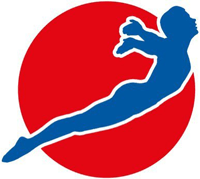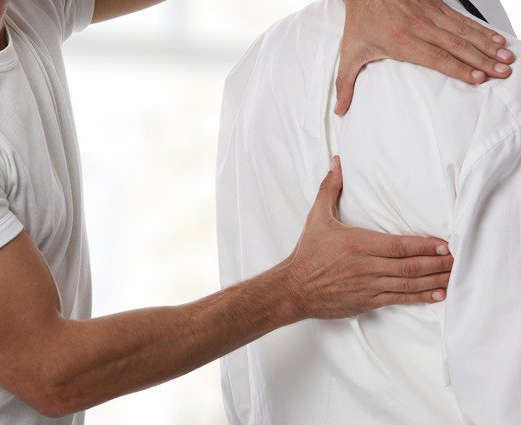In our practice we have an experienced and compassionate team ready to help improve your life. Call us on:
01244 639898
Case study – Mathew Dodd
Background
Following a fall almost two years earlier, Mathew Dodd from Wrexham, slowly found himself changing from an active family man with two children aged 4 and 6 and working in a physical environment building car engines, to living with extreme discomfort and pain and about to lose his job.
If Mathew had sought help immediately after his fall, this situation would not have arisen. However, hindsight is a wonderful thing.
“I noticed that my left shoulder gradually became much higher than the right and rather than seeking help, I just tried to cover it up with baggy clothing and try to ignore the problem. It was not until my employers began to notice I was unable to perform the heavy manual duties I had previously not had a problem with that I realised it was becoming a much larger problem and I needed to see a health professional,” says Mathew.
Diagnosis
Mathew was diagnosed with Scapula Dyskinesis. The Scapula is the shoulder blade which is surrounded by a structure of muscles that enables movement in the arm. As Mathew injured this area during his fall, it meant that these muscles became weaker and imbalanced which, over time, changed the position of his shoulder blade.
This made it difficult for Mathew to move his arm and caused weakness, meaning at times he was unable to lift his children, or drive with both hands on the steering wheel while driving without supporting his left arm on the rest. When Mathew sought medical help, he was immediately referred to Phil at Natural Balance Physiotherapy & Sports Injury in Rossett, near Wrexham.
Treatment
Phil listened carefully to Mathew’s story and made him perform various movements so that he could see exactly the extent of the problem.
“Scapula dyskinesia is a subtle problem, easy to miss when looking at shoulder, neck and upper back problems. Essentially, it is an imbalance of forces through the kinetic chain and consequently can be
difficult to assess and treat. The corrective activities must be specific and tailored appropriately to the needs of each person. Therein lies the physiotherapy challenge but with the appropriate
exercises, clients can achieve excellent outcomes with a full resolution of their problems,” commented Phil.
Having determined the best course of action, Phil recommended a number of exercises to strengthen Mathew’s muscles in his shoulder and return the Scapula to its rightful position, therefore enabling the correct motion of the shoulder and surrounding area, and alleviating the
dyskinesia.
“I quickly saw a difference in my stamina,” said Mathew,
“Not only that but through Phil’s determination, my weekly appointments with Phil and his strict regime that I could also perform at home, I saw a rapid improvement in my physical – and mental – health. I could be open and honest with Phil throughout the process and I am extremely grateful for his efforts.”
“I cannot thank, nor praise, Phil highly enough. He has given me back my life – and saved my job! I would recommend Phil to anyone. He is a very professional, lovely guy,” Mathew concluded.
Phil says, “In Matthew's case, the challenge was not only to reduce his pain but to get him functioning well enough to do his very physical job for 8 hours a day and be able to return to a full working week. It has been a pleasure working with Matthew and his dedication to the rehabilitation work has been great to see and has paid dividends. I am pleased to have had the opportunity to help.”




